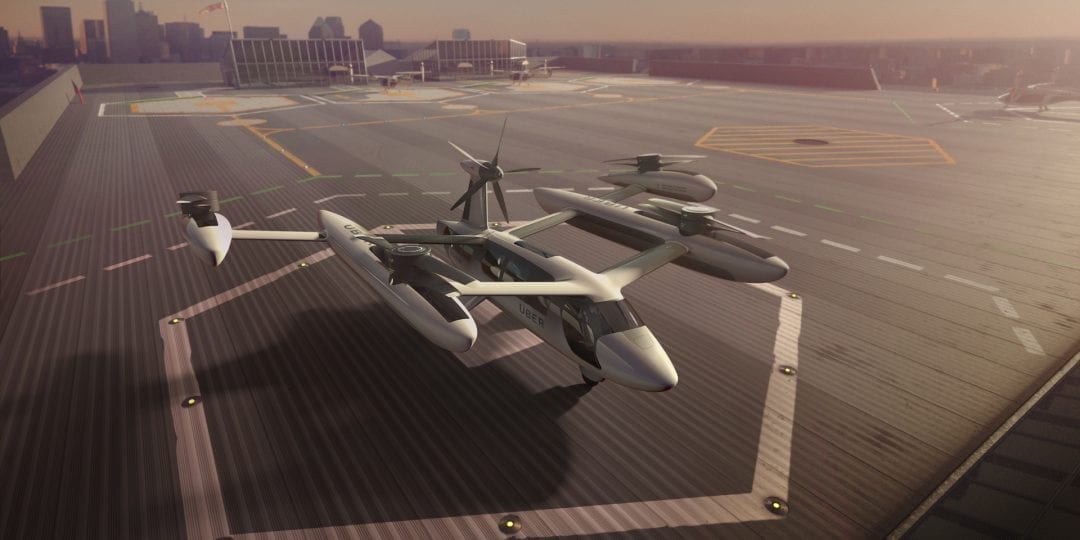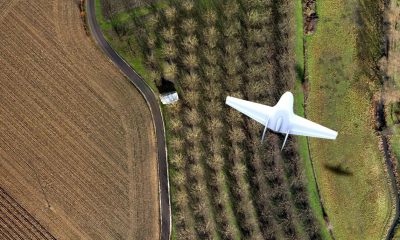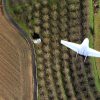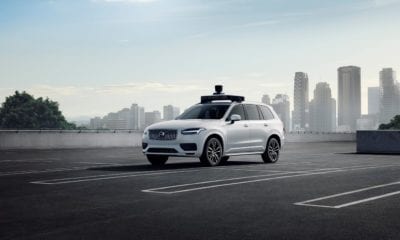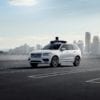AI
Flying Taxis by 2025
Flying taxis are going to become a reality in the near future. If experts gathered at the South by Southwest festival in Austin, Texas, this week are to be believed- flying taxis are expected to take to the skies by 2025.
The dream of flying cars is as at least as old as the automobile itself. Bell, which makes attack helicopters for the U.S. Navy, is working on this new project with another high-profile partner, Uber. The prototype, the Bell Nexus, was unveiled earlier this year. Uber plans to launch its air taxis first in Los Angeles and Dallas, two major traffic-congested American cities. Approximately 20 and 30 other firms are working on similar concepts; major companies among them such as Airbus recently presented its electric aircraft CityAirbus.
Michael Thacker, executive vice-president for technology and innovation at Bell said, “People have been dreaming about it for decades on paper, and now the technology is here.” He also revealed his company’s joint venture with ride-hailing app Uber and several aeronautics firms, including France’s Safran, to create a fleet of flying taxis that are called vertical take-off and landing vehicles (VTOL). The Nexus, as this hybrid electric propulsion aircraft is named, was first unveiled in January at the Consumer Electronics Show in Las Vegas.
Pointing out the advantages of taxis over helicopters Thacker said taxis are financially sounder and quieter. Predicting that these aerial vehicles could begin to be commercially used around 2025 Thacker adds, “It’s not going to replace ground transport, it will augment it in another dimension and it’s not going to jump overnight with thousands of aircraft.
Bell executives said drones transporting goods, such as emergency medical products, should take to the skies well before taxis given lesser restrictions imposed on such aircraft.“Transport of goods don’t have so many requirements in terms of safety and acceptability by people,” he said.
Optimistic investors in technology and industry experts say that the use of flying taxis and other autonomous drones will be widespread, with artificial intelligence in the lead as anticipated by, the American Institute of Aeronautics and Astronautics (AIAA), which says in its report entitled “Vision 2050” presented at SXSW predicts that by 2050 flying vehicles will become a widely used transport option.
Says Scott Drennan, director of innovation at Bell, “For me, artificial intelligence is easier in the air. There’s a lot of space up there and so we have a lot of room, we have a third dimension to maneuver in.”
According to Anil Nanduri, vice president of Drone Group at Intel, “GPS precision today is a couple of meters plus minus,” he said. “For ground-based vehicles… it’s not accurate enough to have the precision you need. But once you go up to third dimension, it’s enough.”
Some skeptics are more doubtful however “You have to see if you can actually test the vehicle in an urban space without having visual line of sight over people with buildings,” said Shivika Sahdev, with the consulting firm McKinsey. Rightly so, given that one of the biggest technological hurdles to be overcome is the battery. Most of the prototypes designed use electric propulsion and batteries currently don’t have enough power to fly a car for a long distance.
Jaiwon Shin, NASA’s associate administrator for the Aeronautics Research Mission Directorate says, “Convergence of many different technologies are maturing to the level that now aviation can benefit to put these things together.” He suggests companies work on making batteries evolve and also collate stockpile and pool data and build artificial intelligence to take over air traffic control, managing the thousands of drones and taxis in the air.
There is quite a chance that China might overtake America, Shin says, since China has a “higher tolerance level for risk” in the development of new technologies. When a company wants permission to fly its imperfect prototypes over densely populated mega-cities, Sahdev says, “that’s where the vehicle operators will go, that’s where the system providers will go to, to be able to actually test it in the real world.”
Optimism galore, Elon Musk says he’ll get us to Mars. Uber claims it’ll get a millennial from San Francisco to San Jose in 15 minutes flat with its timeline for this flying taxi that does not yet exist is 2023. While no flying taxi exists yet, Uber has daringly put an estimate-the “near-term” cost of that San Francisco to San Jose trip: $43.
Alex Zosel, Co-founder of Volocopter GmbH, “In the future autonomous air taxis will be integrated in the general public transport scheme. Wherever you are you will put origin and destination into your phone and will be presented with different means to get there. Some more affordable, but slower. Some a little more expensive and faster”.
https://www.youtube.com/watch?v=jSQMFM3xYaw
How useful was this post?
Click on a star to rate it!
Average rating 0 / 5. Vote count: 0
No votes so far! Be the first to rate this post.
We are sorry that this post was not useful for you!
Let us improve this post!
Tell us how we can improve this post?

